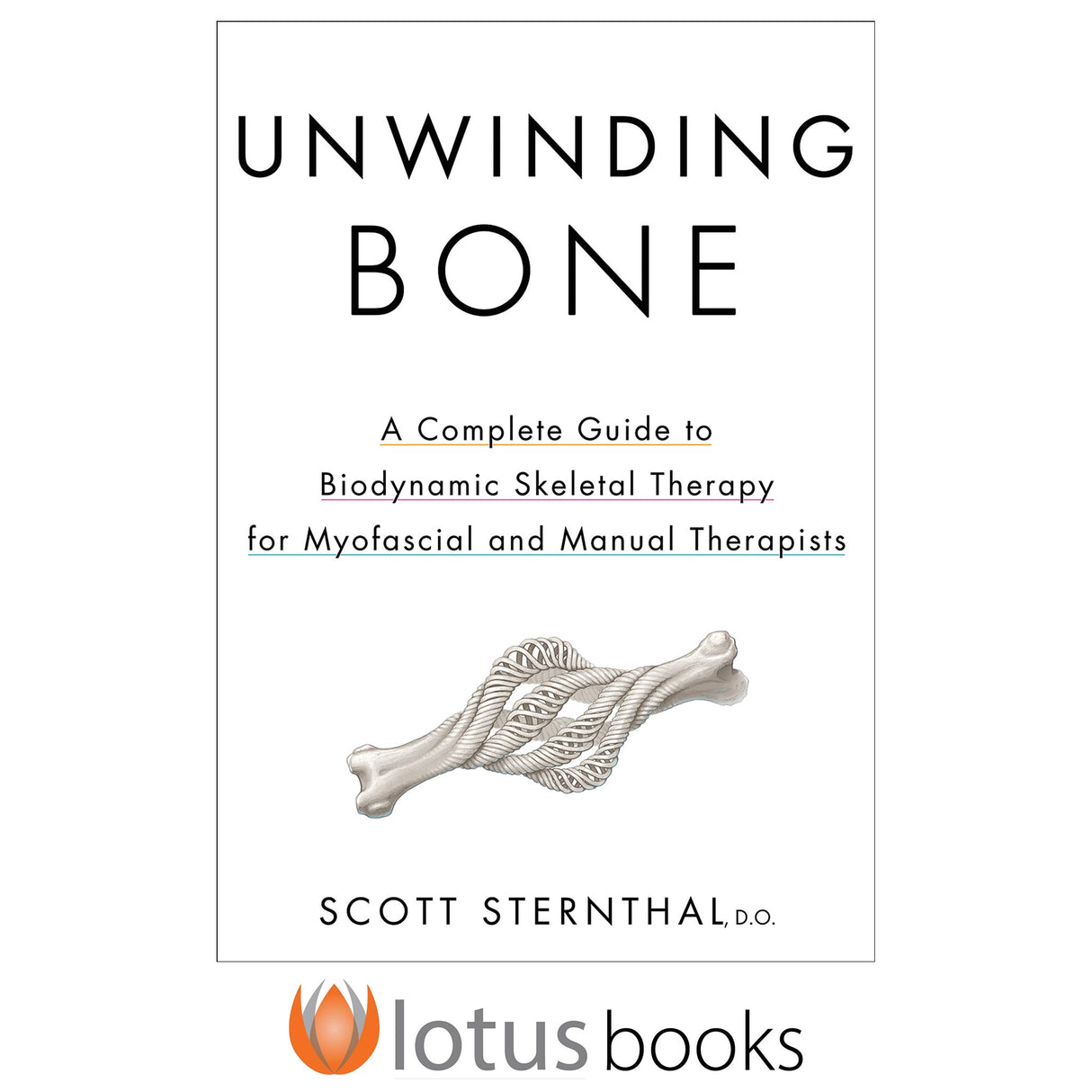Unwinding Bone
A Complete Guide to Biodynamic Skeletal Therapy for Myofascial and Manual Therapists
Author: Scott Sternthal
$47.95 CAD
Discover biodynamic skeletal therapy (BST) with guidance direct from its creator.
Unwinding Bone is a comprehensive, practical resource on biodynamic skeletal therapy (BST)—a gentle, non-manipulative approach that engages with bone as dynamic, responsive tissue. Rather than focusing on the movement of bones, BST emphasizes the movements within them, helping practitioners identify and treat bones that have lost their natural elasticity and vitality and preparing the skeletal system for further manual treatment.
Author Scott Sternthal, DO, the developer of BST, breaks down complex concepts into clear, practical information in this hands-on guide for physiotherapists, manual therapists, osteopaths, chiropractors, and bodywork professionals.
The first half outlines the theoretical foundations of BST, reviewing skeletal anatomy and composition, including bone development, remodeling, and mechanical behavior. Explore the continuity between bone and fascia—the osseofascial continuum—as well as the key concepts of texture, drive, and rhythm, including biotensegrity and fulcrum-lever systems.
The second half moves into the practical application of BST. Sternthal provides step-by-step procedures for finding and treating osseofascial compactions in nearly every bone throughout the body. More than 500 photos bring the techniques to life, making this an unparalleled resource for both new and experienced practitioners.
Unwinding Bone is your hands-on guide to understanding and treating the quality and texture of bone tissue.
Audience
Manual and myofascial therapists, including massage therapists, craniosacral therapists, physical therapists, chiropractors, and osteopaths.
Chapter 1. Silence
Chapter 2. Stillness
Chapter 3. Sensing
Chapter 4. Osseofascia
Bone Anatomy
Bone Composition and Behavior
Bone Development and Remodeling
Bone, Stress, and Strain
Osseofascial Continuum
Osseofascial Compactions
Chapter 5. The Pelvic Gather
Chapter 6. A Wilderness of Surprises
Chapter 7. Some Things Happen Only Once
Chapter 8. Texture, Drive, and Rhythm
Biotensegrity and the Osseofascial Continuum
Sharpey’s Fibers and Osseofascial Tissue Continuity
Potency
Fulcrums and Fulcrum-Lever Systems
Primary Respiration
Chapter 9. Doubt
Chapter 10. Water
Chapter 11. Biodynamic Skeletal Therapy
A Brief History of Biodynamic Skeletal Therapy
The Principles of Biodynamic Skeletal Therapy
Six Stages of Biodynamic Skeletal Therapy Treatment
Sensing Primary Respiration
Chapter 12. Trust
Chapter 13. Steven’s Jaw
Chapter 14. How to Test and Treat Bones
Touch-Testing
Two Phases of Biodynamic Skeletal Therapy Treatment: Local and Regional
Frequently Asked Questions
Chapter 15. Process and Results
Chapter 16. Jerry’s Shoulder
Chapter 17. Bones and Regions
Quick Guide to the Six Stages of Biodynamic Skeletal Therapy Treatment
Forefoot
Midfoot
Hindfoot
Lower Extremity
Pelvis
Lumbar Spine
Thorax
Hand and Wrist
Upper Extremity
Cervical Spine
Cranium
Sensing Your Primary Respiration II
Regional Treatment
Balancing the Three Spheres
Chapter 18. Martha’s Cranium
Chapter 19. Sensing II
Chapter 20. Gut, Brain, and Bone
The Gut-Brain-Bone Axis and Biodynamic Skeletal Therapy
Bone Supporting the Gut-Brain Axis through Bony Landmarks
Bone Impacting the Brain through an Afferent Loop
Chapter 21. The Perfect Technique
Chapter 22. The Breath of Life
Chapter 23. Listen
Epilogue. Let Us Compare Meteorologies
“Scott Sternthal has done manual therapy a service by getting his hands around the fascial structure within the bone. We are familiar with interosseous strain but have mostly ignored intraosseous and intrachondral strain patterning. By employing the principles of biodynamic osteopathy, this book shows how to unwind the fascial ‘leather’ in bone that remodels the scaffolding for the calcium apatite.”
—Tom Myers, Author of Anatomy Trains





 Three bodies and three categories of fascia
Three bodies and three categories of fascia Calcaneus palpations
Calcaneus palpations Capitate and hamate palpations
Capitate and hamate palpations Mandible and hyoid palpations
Mandible and hyoid palpations
